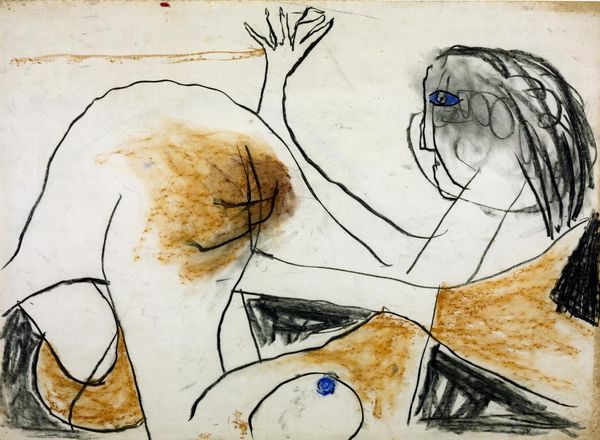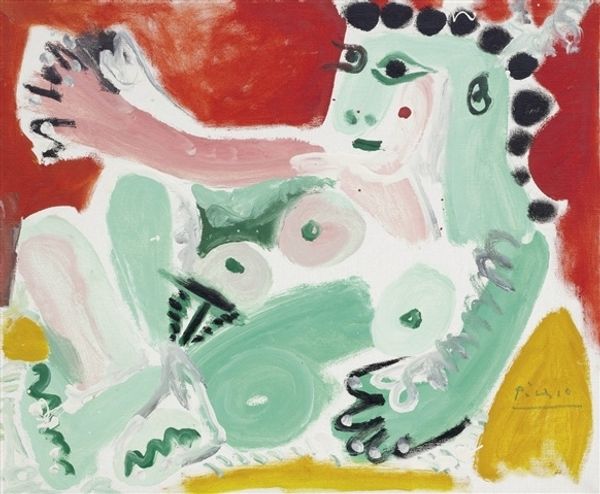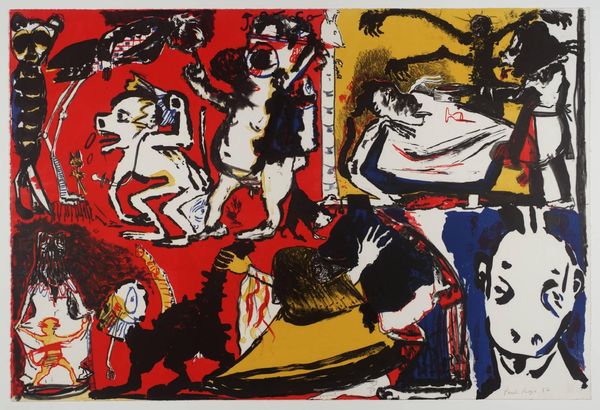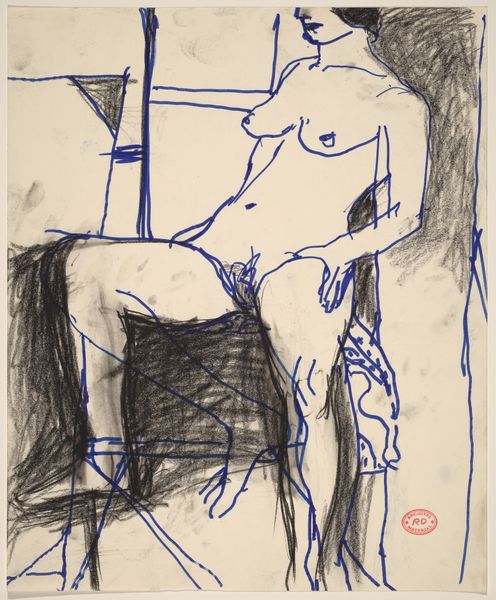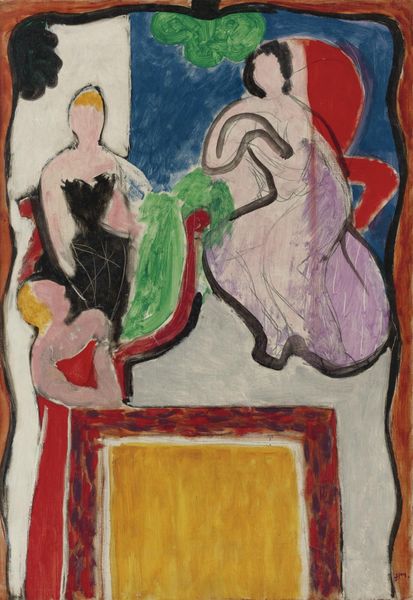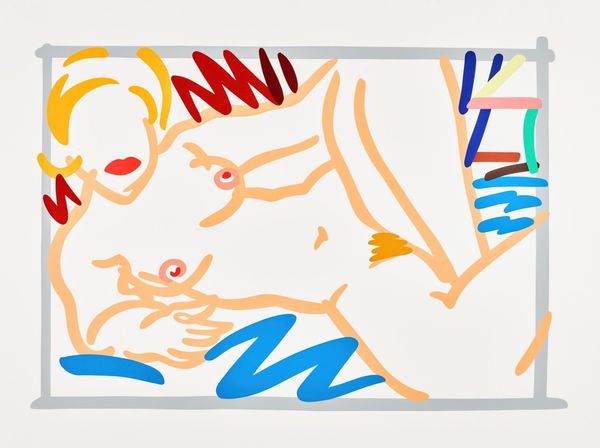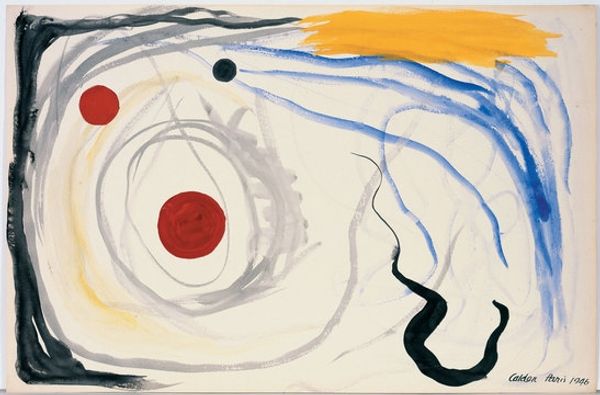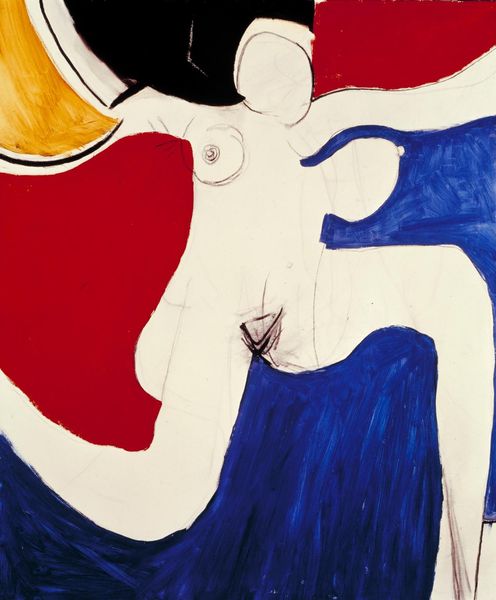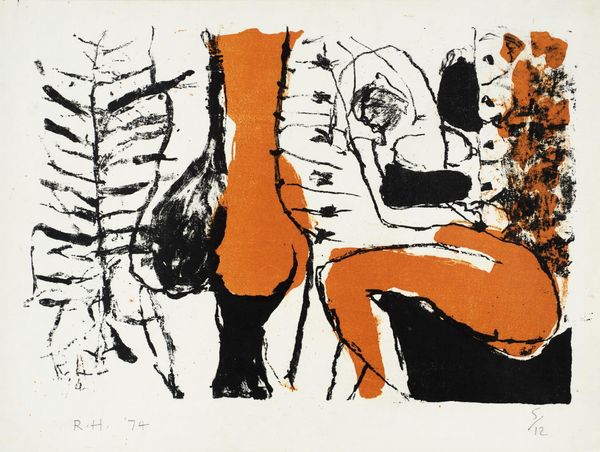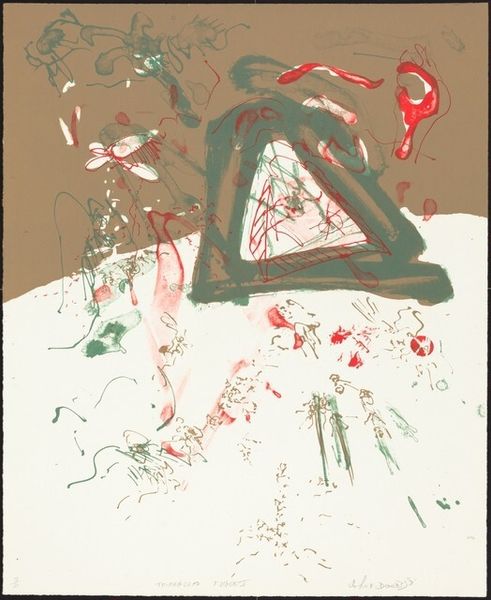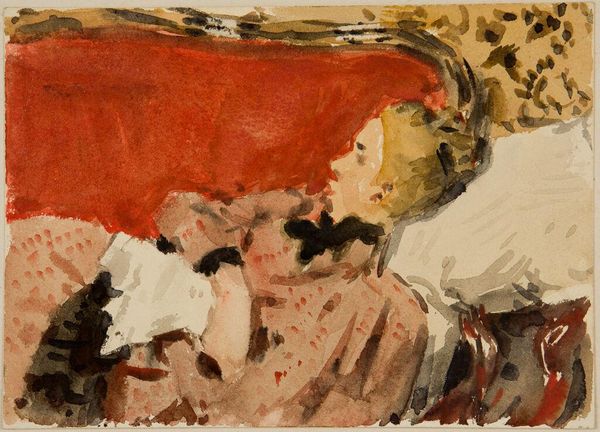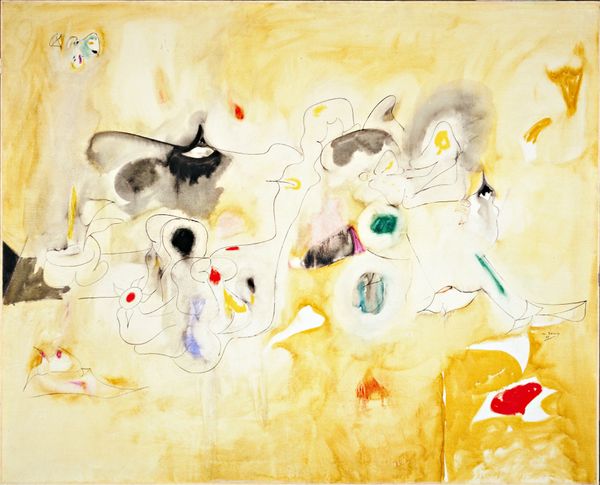
Dimensions: image: 380 x 560 mm frame: 570 x 750 x 20 mm
Copyright: © Roger Hilton. All Rights Reserved, DACS 2014 | CC-BY-NC-ND 4.0 DEED, Photo: Tate
Editor: This is Roger Hilton's "Two Dogs," created in 1973. It’s an intriguing piece! The bold colors and fragmented forms create a sense of playful chaos. How do you interpret this work within the context of its time? Curator: Hilton’s late work, like this, often reflects a move away from pure abstraction towards a more figurative, personal language. Consider the socio-political climate of the 70s: a period of unrest, economic instability, and evolving cultural norms. Editor: So the dogs and the abstract forms might be more than just visual elements? Curator: Exactly. Hilton's simplification could be seen as a reaction against the perceived elitism of the art world. The rough, almost childlike quality challenges traditional notions of artistic skill. The inclusion of dogs… pets… invites a connection to everyday life. What do you make of the composition? Editor: It feels almost unfinished, raw. I see your point about challenging artistic norms. Curator: Precisely. And that rawness, that deliberate rejection of polish, speaks volumes about the changing role of art in society, its accessibility and relevance.
Comments
Join the conversation
Join millions of artists and users on Artera today and experience the ultimate creative platform.
tate 6 months ago
⋮
Two Dogs was painted in Roger Hilton’s final years, a prolific period when the artist worked exclusively in gouache and drawings. The painting is organised around the image of two animals drawn in profile and facing in opposite directions. Typically for Hilton, whose paintings often involve visual rhymes and repeats, the dogs are counterbalanced in the composition. Other consistencies with earlier works include rounded planes of solid colour that appear nudged out towards the edge of the page and the way in which the outlines of the dogs meet and overlap. Whilst the dogs are described by their ears, noses, claws and tail, the more abstract features of the painting, such as the areas of solid colour or pattern, resist straightforward interpretation. Occasions of overpainting and charcoal visible under and over the paint also serve to contradict its narrative legibility.
